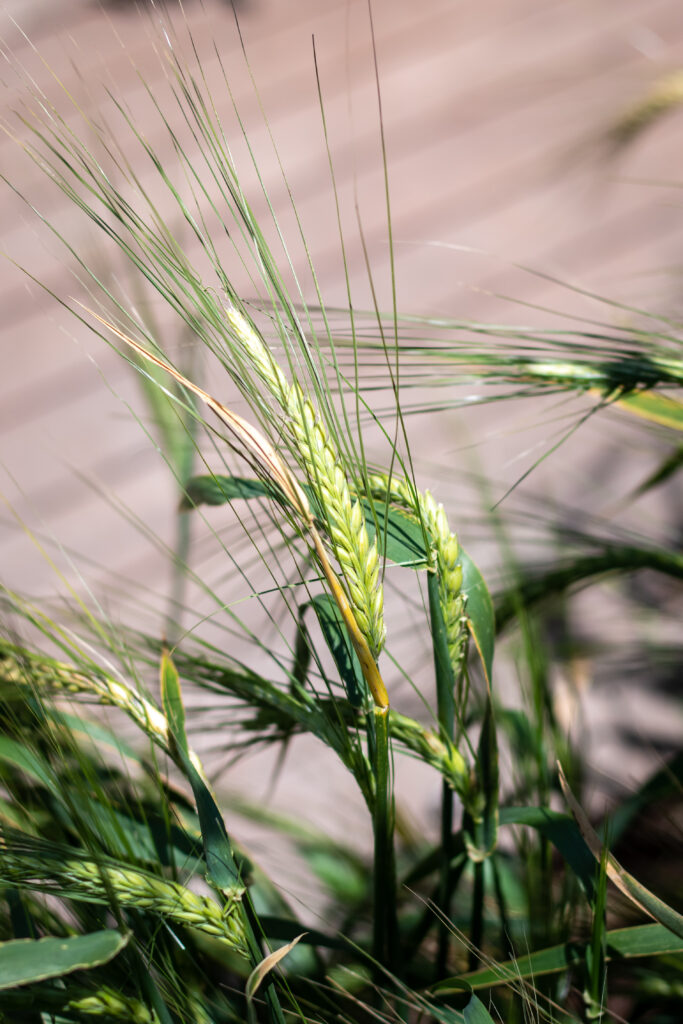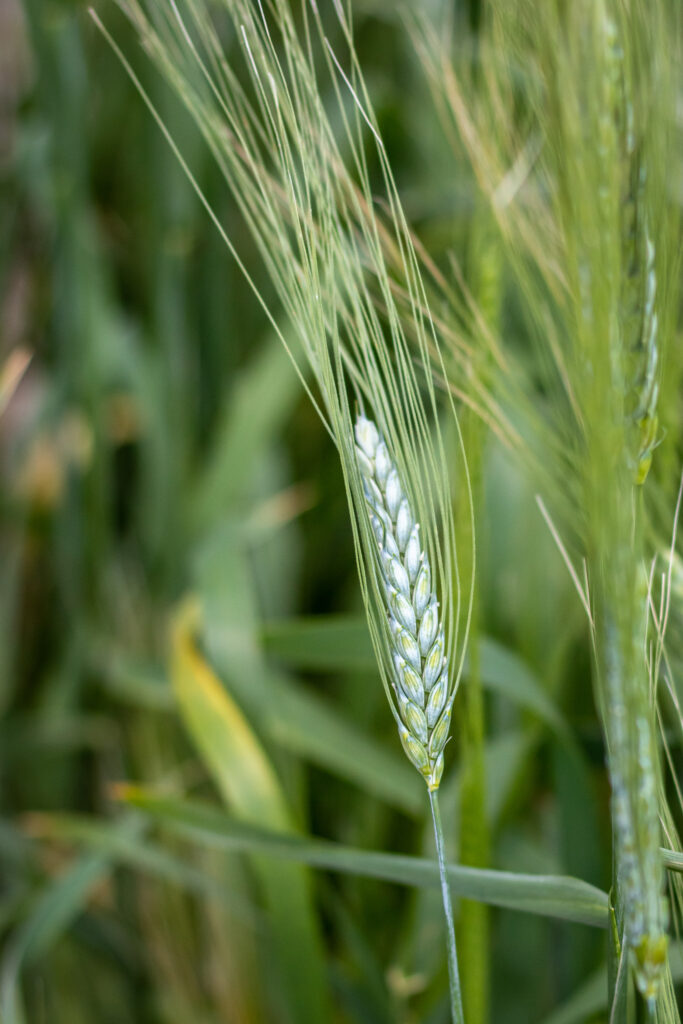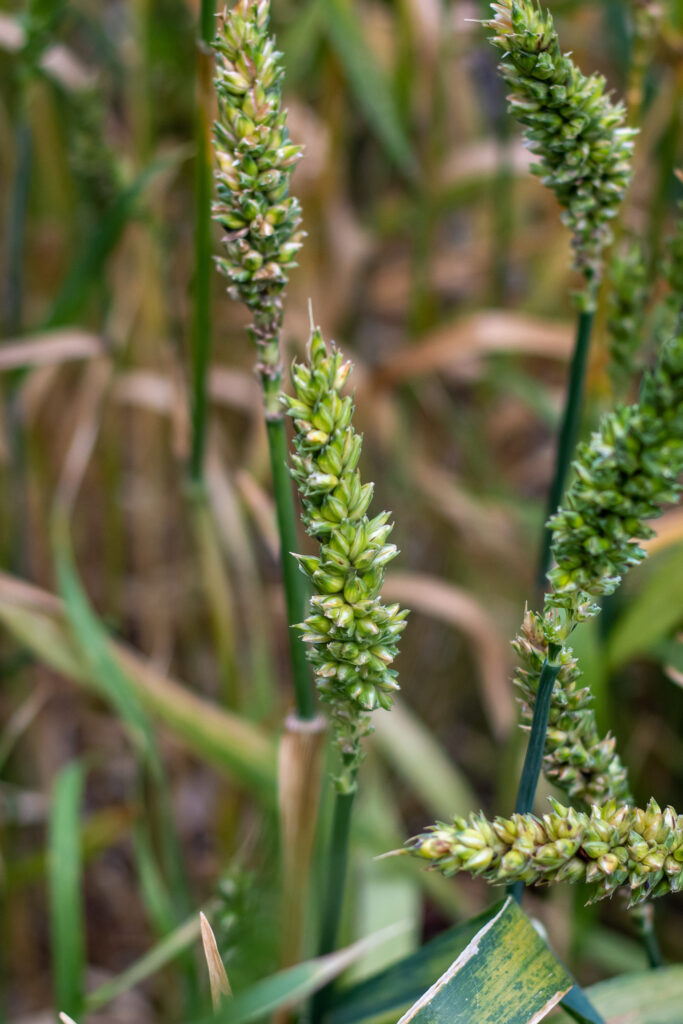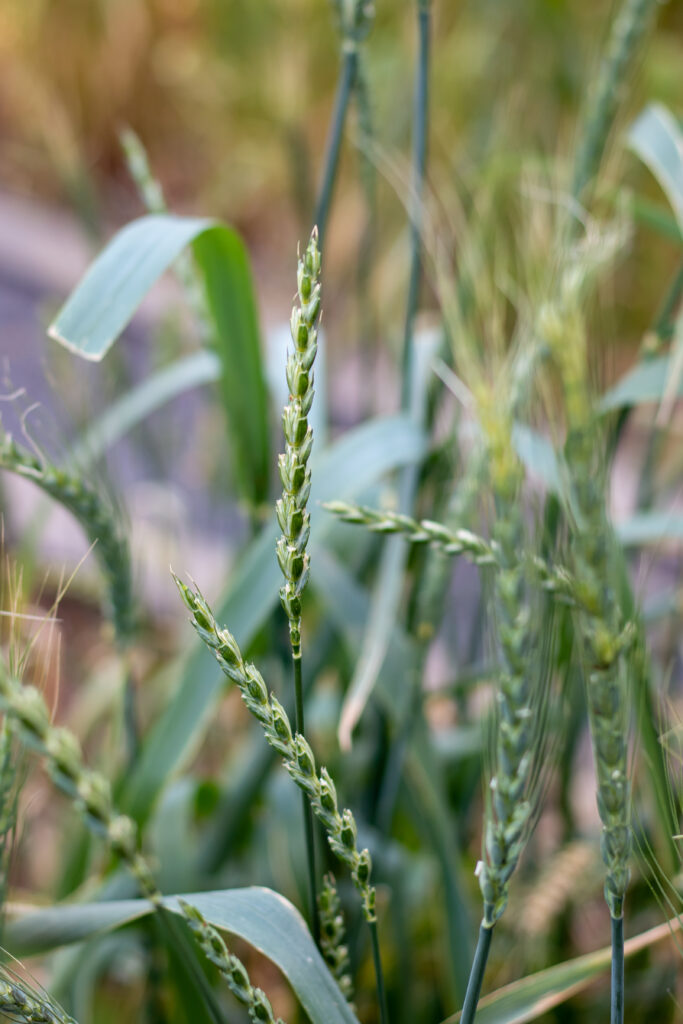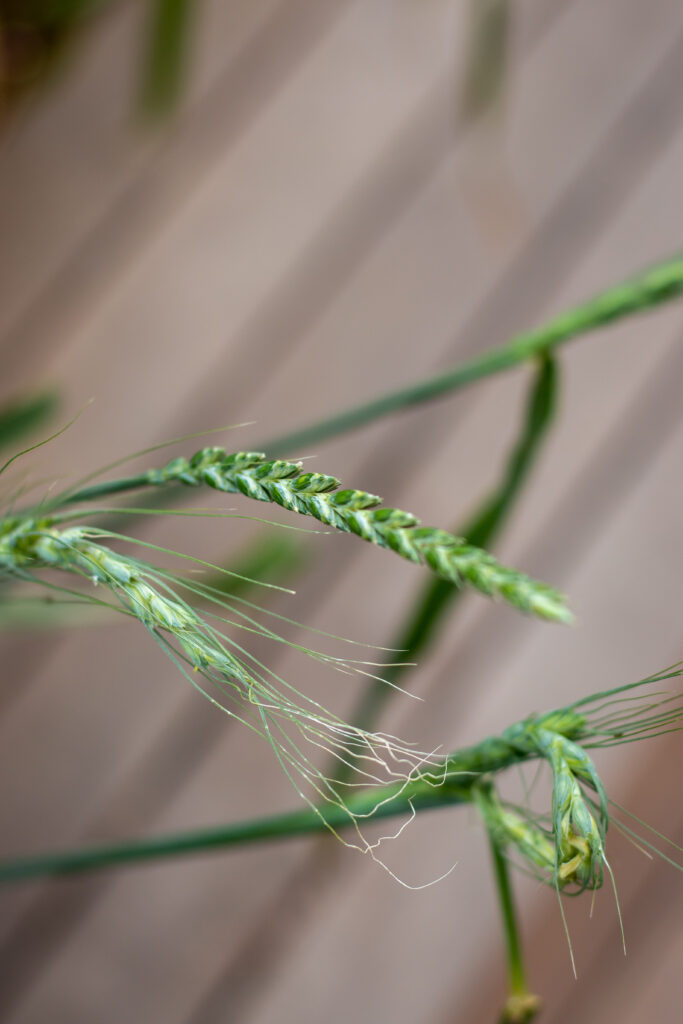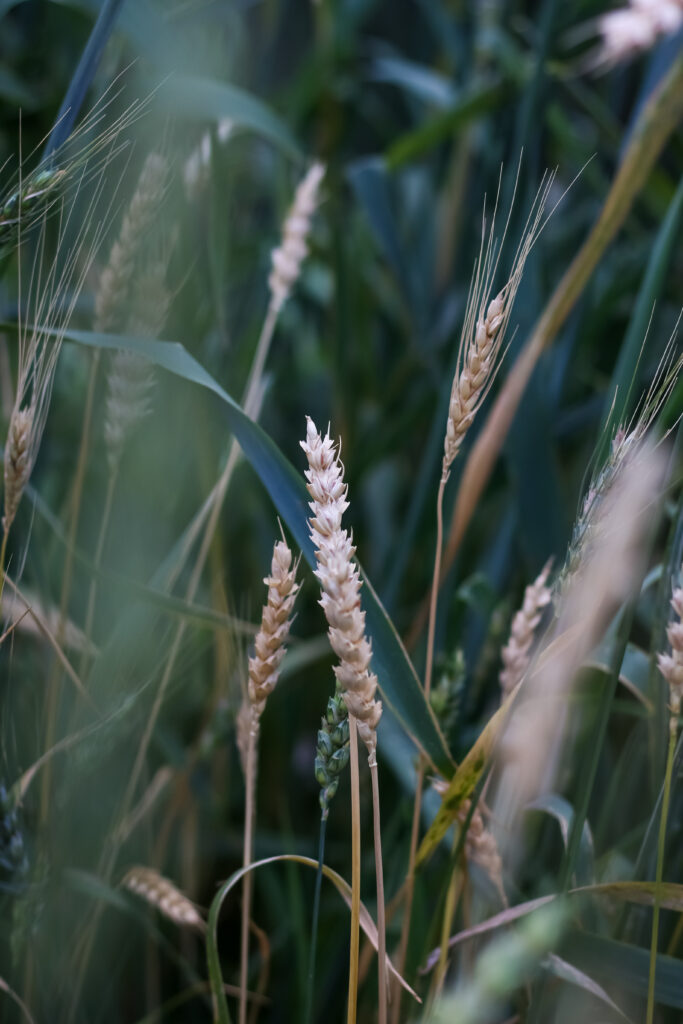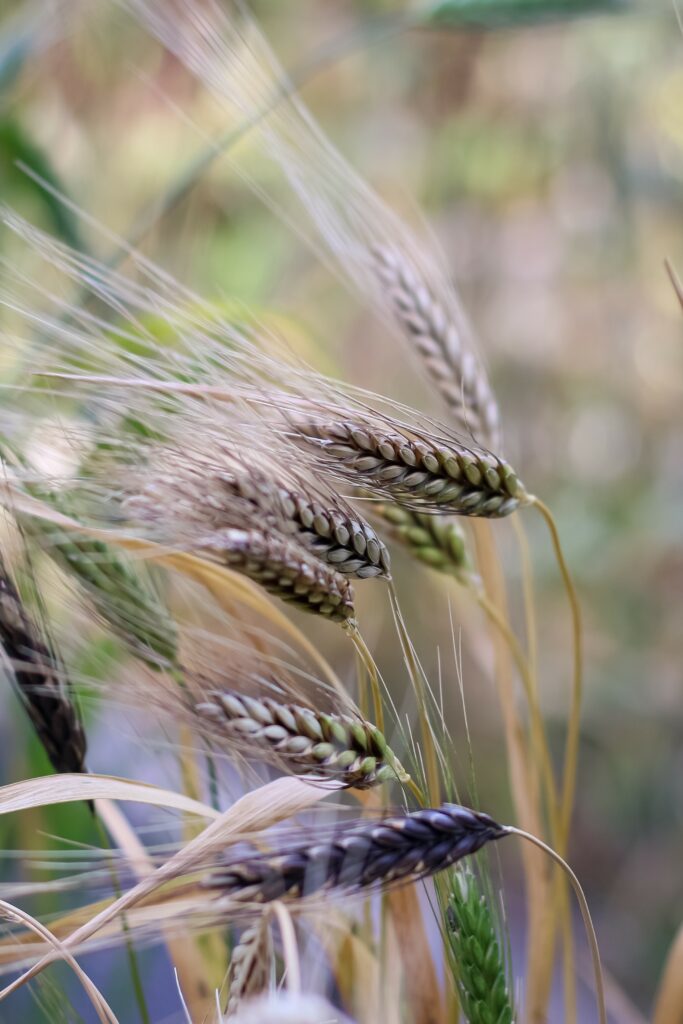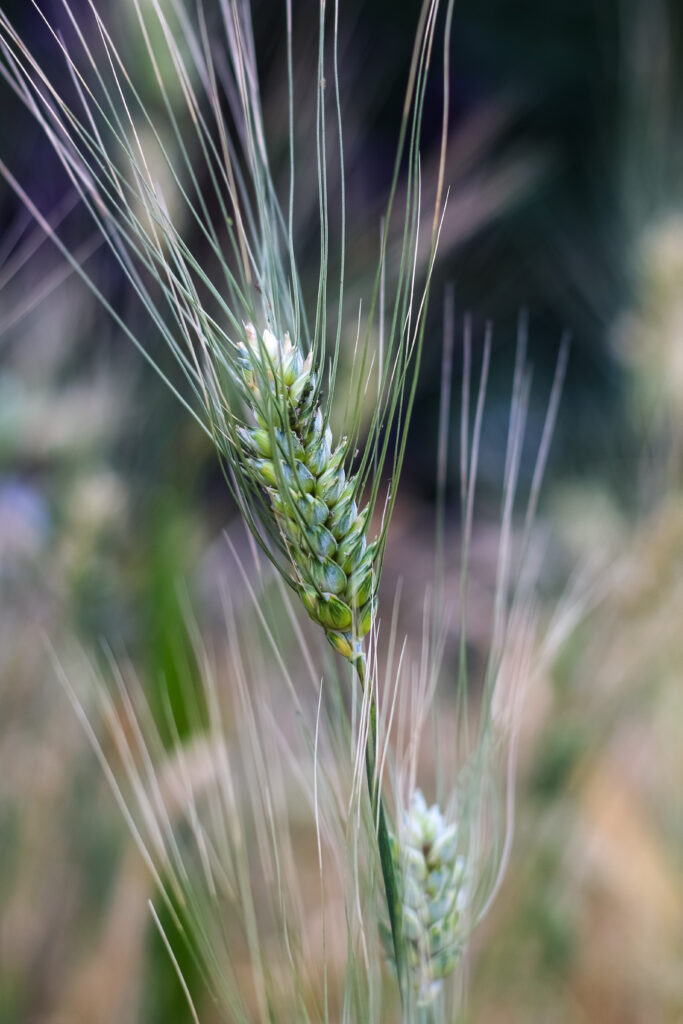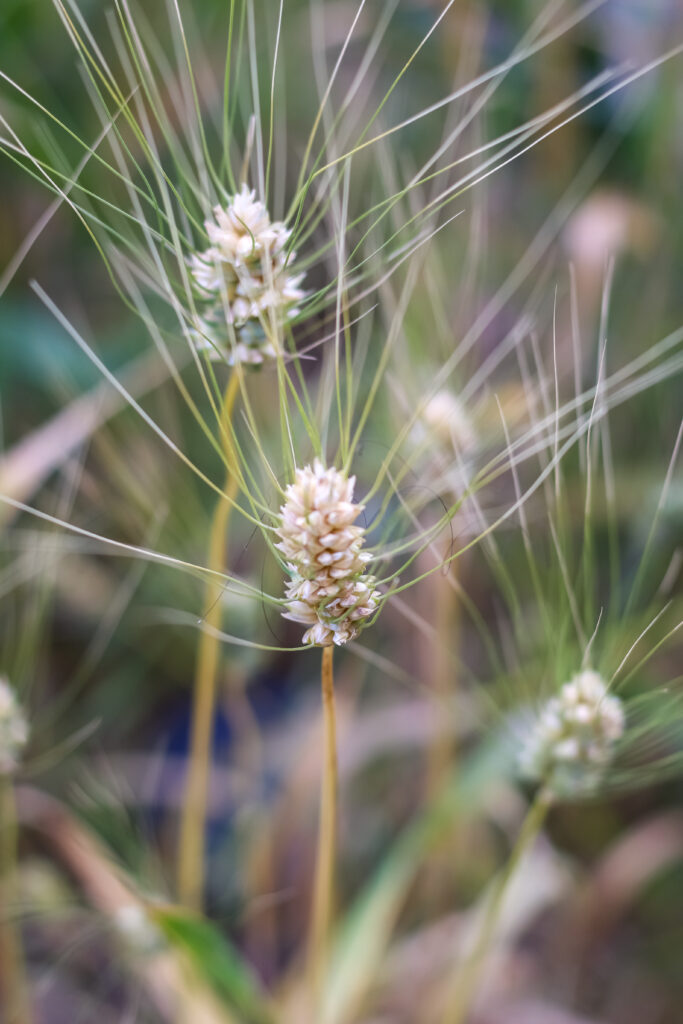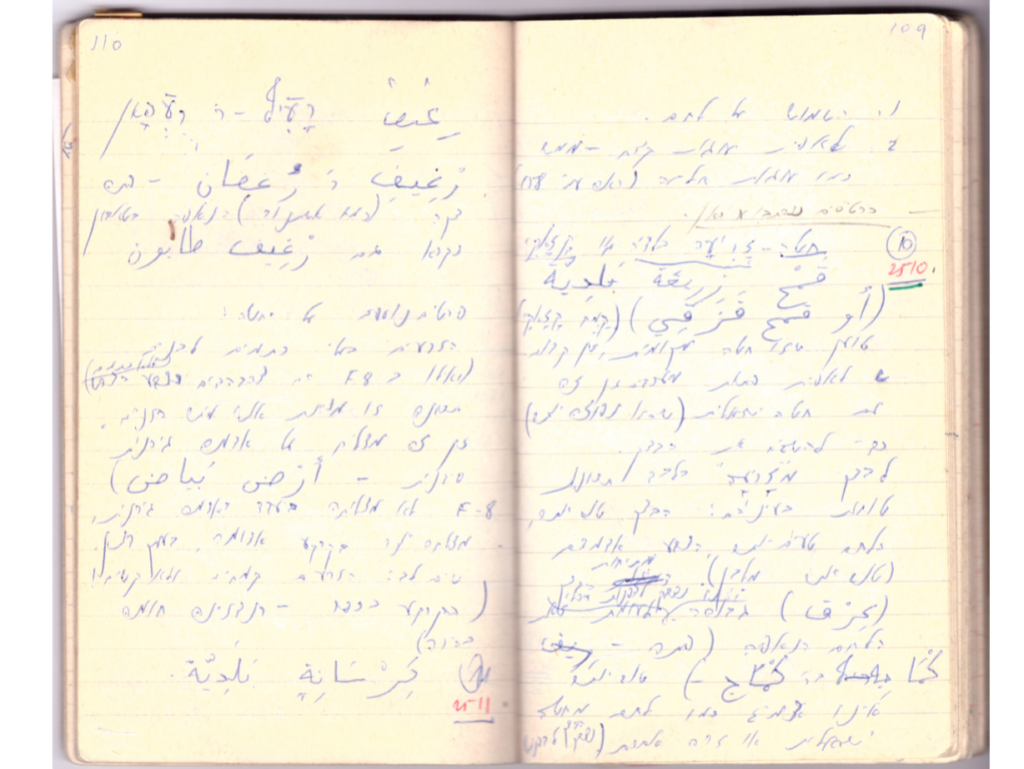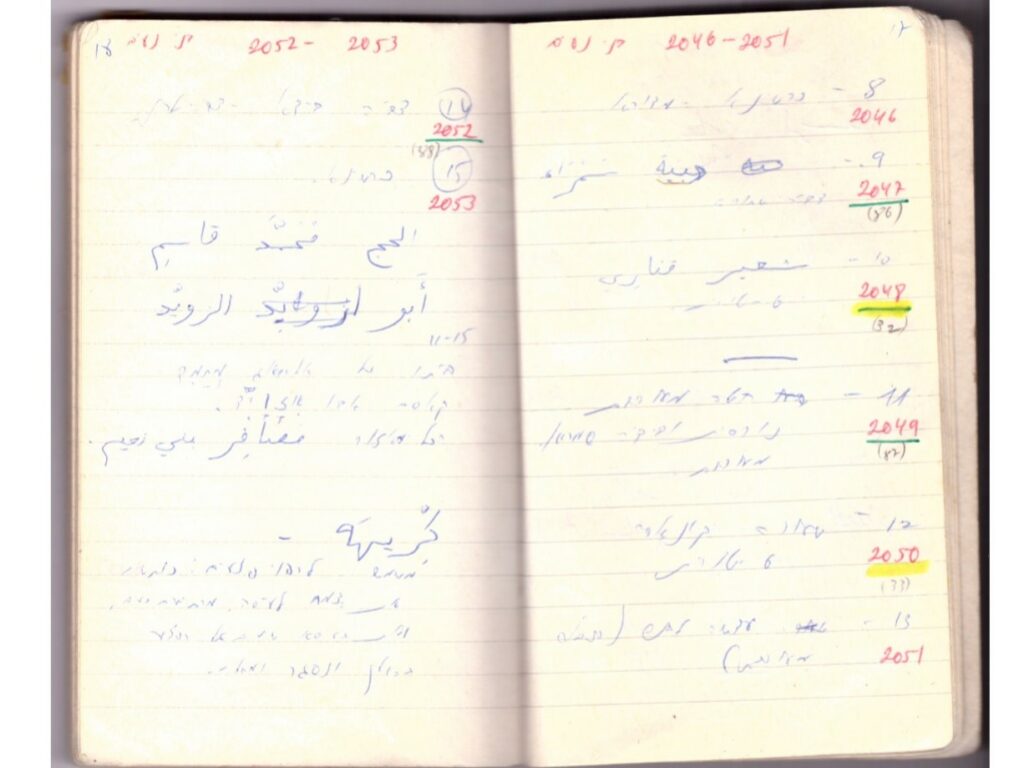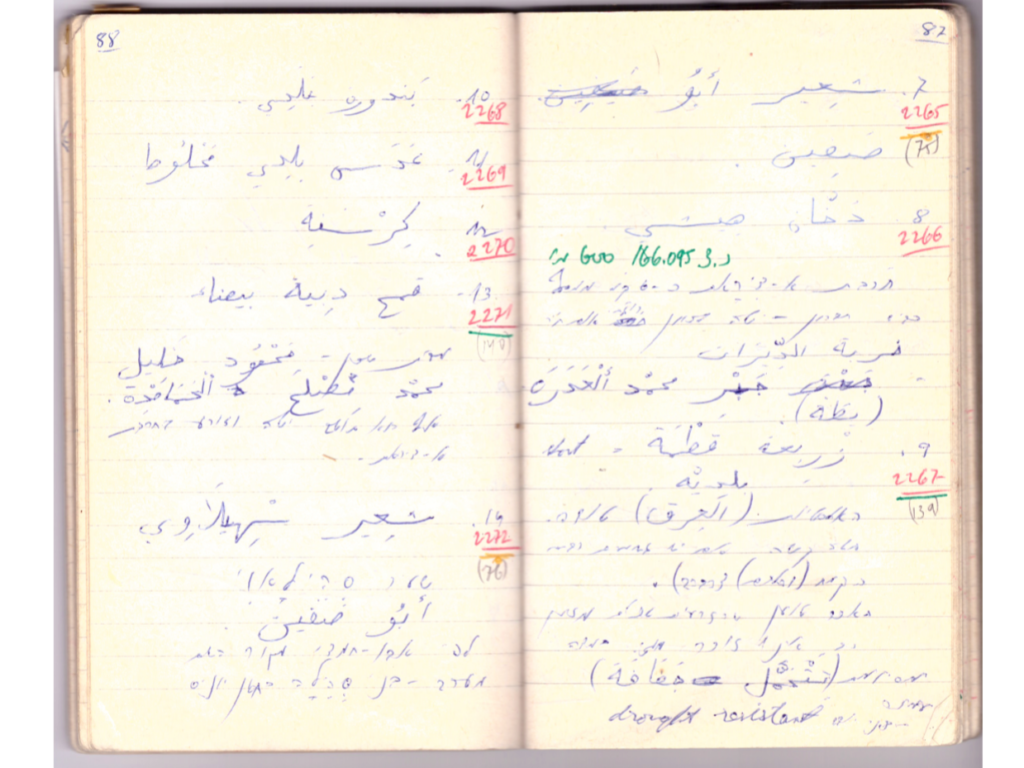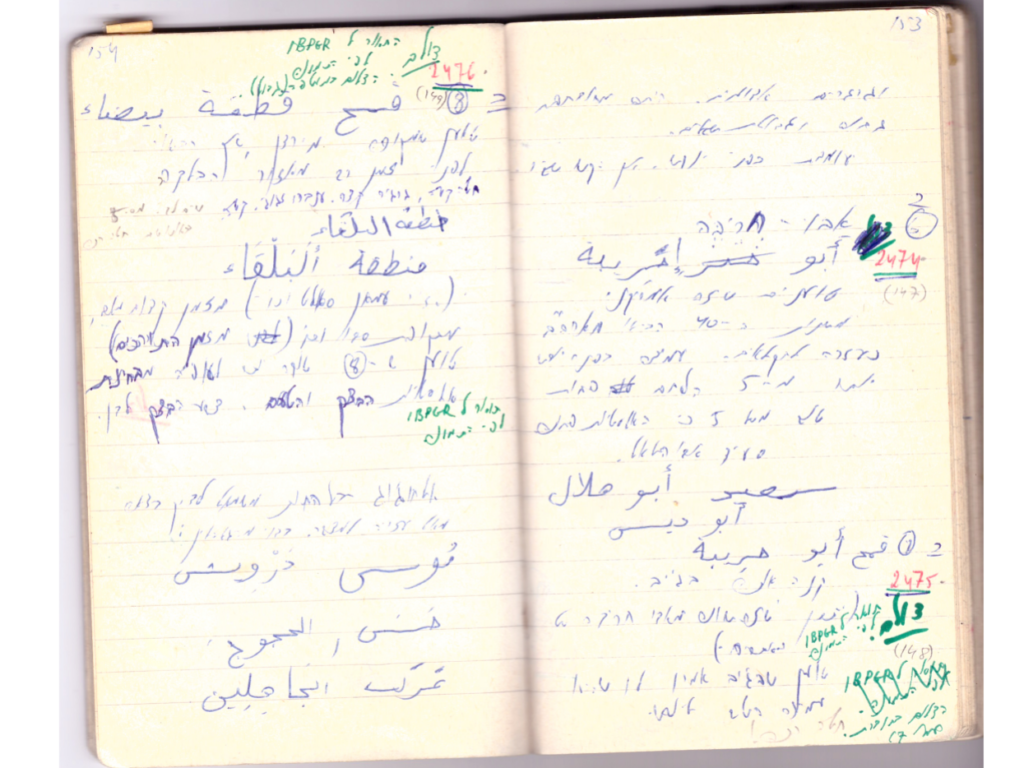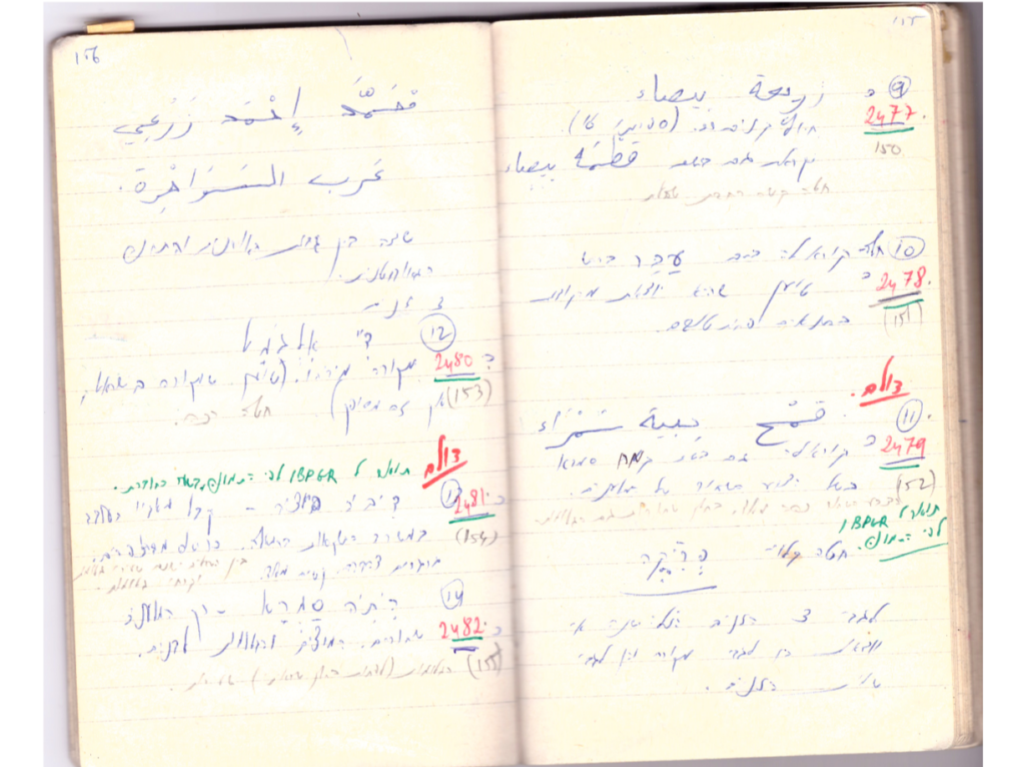
Last December, we sowed on Asif’s rooftop farm a collection of local grains, including wild varieties, ancient varieties and landraces, and modern varieties cultivated in Israel by the Agricultural Research Organization.
In many aspects, the story of wheat is the story of human civilization. The history of grains begins in the Fertile Crescent region, which spans present-day Iraq, Afghanistan, Turkey, Syria, Kuwait, Israel and Palestine. The first human urban societies developed right here, and grains developed with them, becoming, in the twenty thousand years since their domestication, humanity’s most basic and common food.
We saw that preserving wheat varieties means preserving culture and the flavors of the past, but even more, preserving the genetic and biological diversity required for agricultural stability and a healthier, more nutritious nutrition. Some even claim that the protein structure of these cultivars may make them digestible for the gluten intolerant. Today, the preservation of heirloom varieties is considered a worldwide trend, but this was not always the case.
The evolution of grains – in a nutshell
The history of grains in our region may be divided by type of grain (wheat and barley), and by period – beginning in a time when wild barley and wild wheat sometimes grew side by side – and continuing in the agricultural revolution, the outcome of selective breeding for traits supporting the domestication of the wild varieties. An ongoing selection for desired characteristics such as crop yields, grain size and flavor accompanied the development of human civilization in the next thousands of years.
As different cultures scattered around the world and formed different communities in diverse geographical areas, this process was highly decentralized. The resulting landraces, called heirloom varieties, are the foundation for a wide genetic diversity which lasted for thousands of years.
The era of varietal diversity ended in the middle of the last century, with the Green Revolution and the crossbreeding of cereals with dwarf varieties for intensive production increases. The success of the “modern varieties”, designed to feed the growing world’s population after two world wars and a time of devastating hunger in Europe, was such that the food industry nearly abandoned earlier varieties. But the loss of ancient varieties also meant a loss of culture, of flavor, of health – and of a genetic and biological diversity, crucial for the survival of mankind in a time of climate crisis.
In June, we harvested the stalks we sowed at the beginning of winter. They now decorate the tables at Cafe Asif, and allow visitors a glimpse into the prominent differences between different kinds of wheat and barley, and into their transformation in our area over time.
Timeline: The History of Local Grains
From out Rooftop Farm
The Man who Fought Flour Mills
Jacob Mattatia, born in Jerusalem in 1933, was a nature and environment enthusiast since his childhood. He completed a PhD in the Botanical department of the Hebrew University and a postdoc in the US, and in the years 1978-1984 worked at the Israel Plant Gene Bank of the Agricultural Research Organization. A man of vision, Mattatia understood the value of ancient seeds, and embarked on a personal journey, touring the country to save them. While Jewish immigrants from Europe considered local wheat to be inferior and imported modern varieties of bread wheat, local fellaheen preserved ancient seeds in their communities over hundreds of years. In his encounters with Druze and Palestinian farmers in Israel and the West Bank, Mattatia created a collection of seeds, which he kept for years in neat little envelopes. He translated the oral information he received in Arabic into Hebrew, and filled notebooks with detailed lists, which survived to this day. These notebooks are now an invaluable source for information about folkloric knowledge and the origin of different varieties.
Yet at the time, Mattatia’s dedication to the preservation of heirloom plants raised many eyebrows, and was one of the reasons for his dismissal from the Agricultural Research Organization in the mid-1980s. 40 years later, his collection is considered extremely valuable, and his heritage is investigated and preserved in the Gene Bank, in the Agricultural Research Organization and by many researchers.
Mattatia managed to save about 140 ancient and heirloom cultivars of wheat and barley, as well as many varieties of chickpea, tomato, faqquos (Armenian cucumber), sesame and more. In recent years, seeds from his collection have been planted in experimental plots, including Asif’s rooftop farm. Some of the stalks grown at Asif were ground into flour and put to a pioneering culinary use in bakeries around Israel, for an exhibition curated at Asif by Ronit Vered, as well as in a collaboration between the Agricultural Research Organization and baker Hagay Ben Yehuda. These projects are motivated by the hope that in the near future, the general public could also benefit from breads and baked goods made from local, healthy, and nutritious heirloom cultivars.
A special thanks to Dr. Roi Ben-David from the Department for Plant Sciences, Vegetable and Field Crops; Dr. Einav Mayzlish Gati from the Office of Deputy Director for Research and Development, Israel Plant Gene Bank; and PhD candidate Sivan Frankin, who works on the preservation and characterization of the collection’s heirloom varieties.


